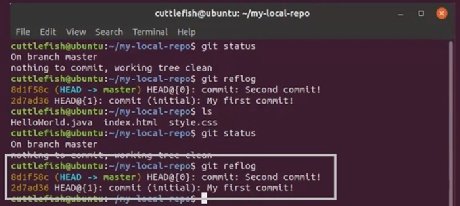

- Git add remote repository to a subdirectory how to#
- Git add remote repository to a subdirectory full#
- Git add remote repository to a subdirectory software#
- Git add remote repository to a subdirectory code#
We also saw how to clone a repository, created on platforms like github or gitlab. In previous examples we saw what is the difference between a “bare” and “standard” repository. Cloning an existing local repository to a bare one
Git add remote repository to a subdirectory full#
When we clone a git repository a full “copy” of the remote one, with all its branches, is created locally and the currently active branch of the cloned repository (typically the “master” branch) is checked out. For example, to clone the repository as linuxconfig_repo, we would run: $ git clone linuxconfig_repo It is possible, however, to explicitly provide the name of the directory that should be used for the cloned repository. The command above will clone the repository in a directory called linuxconfig if a directory with the same name already exists and is not empty, the command will fail. To do so we have to use the clone git command.
Git add remote repository to a subdirectory code#
In case the source code of a project is already managed using git and we want to contribute on it, we need to create a local copy of it on our system. git subdirectory, but the files and directories normally contained inside of it: $ ls linuxconfigīranches config description HEAD hooks info objects refsĪ typical example of “bare” repositories, are those we create when using services like github or gitlab.

To create a git “bare” repository, all we have to do is to add the -bare option to the command we saw in the previous example: $ git init -bare linuxconfigĪ “bare” repository does not contain a. In the git workflow, they are used to share the code, not to work directly on it, therefore they don’t “bare” repository from a “standard” one? Git “bare” repositories are used as “remotes” counterparts of the local repositories. Another type of git repository exists, however: it is what is called a “bare” repository. In the previous section we saw how to create a standard git repository, which, as we saw, includes a working tree. We will not expand on this topic here: the important thing, at this time, is getting the basic concepts. Here we say “typically” because when initializing a git repository it is possible to create detached working trees.

git subdirectory, represents our working tree: it is here that we will work on our code and our project files are (or will be) placed. Typically, the directory which contains the. branches config description HEAD hooks info objects refs git subdirectory is created in the specified path: this is where all the files needed by git are kept: $ ls -a linuxconfig/.git Passing the directory path as argument to the command is, optional: if it is omitted the repository will be initialized in the current working directory. When we do so, the directory is created if it doesn’t already exist. In the example above we provided the path of the project directory as argument to the command. Supposing we want to create a repository in a directory called “linuxconfig”, we would run: $ git init linuxconfig How can we do it? The git command which let us accomplish this task is init: with it, we create an empty repository or re-initialize anĮxisting one. Suppose we want to create a new, local, git repository. The act of switching between different states of a repository, represented by branches or commits The directory associated with our repository usually, but not necessarily, the one containing the. When we create a commit, it is the index content that is includedĪn isolated line of development which spawns from a certain point of its “parent”Īn operation which consists into integrating the changes stored in the index of a repository into the repository historyĪ reference to the last commit of a branch Changes we include with the add command are “stored” here. In the table below you can see some of the git terminology keywords and their meaning: Term $ – requires given linux-commands to be executed as a regular non-privileged userīefore we start learning the basic git commands we will use in our workflow, we should clarify some key concepts that will recur in this tutorial.

# – requires given linux-commands to be executed with root privileges either directly as a root user or by use of sudo command
Git add remote repository to a subdirectory software#
Requirements, Conventions or Software Version Used Software requirements and conventions used Software Requirements and Linux Command Line Conventions Category


 0 kommentar(er)
0 kommentar(er)
